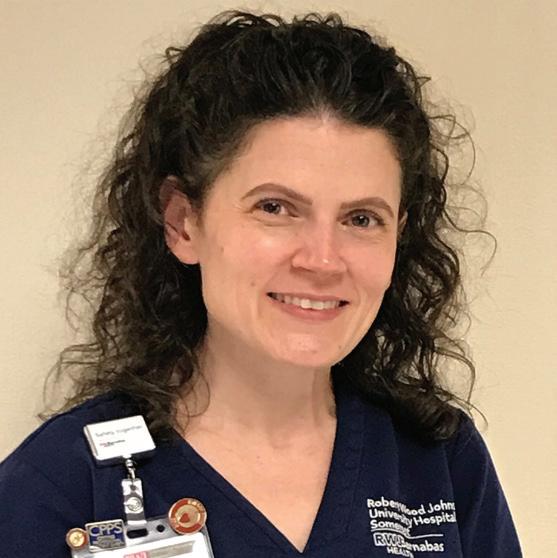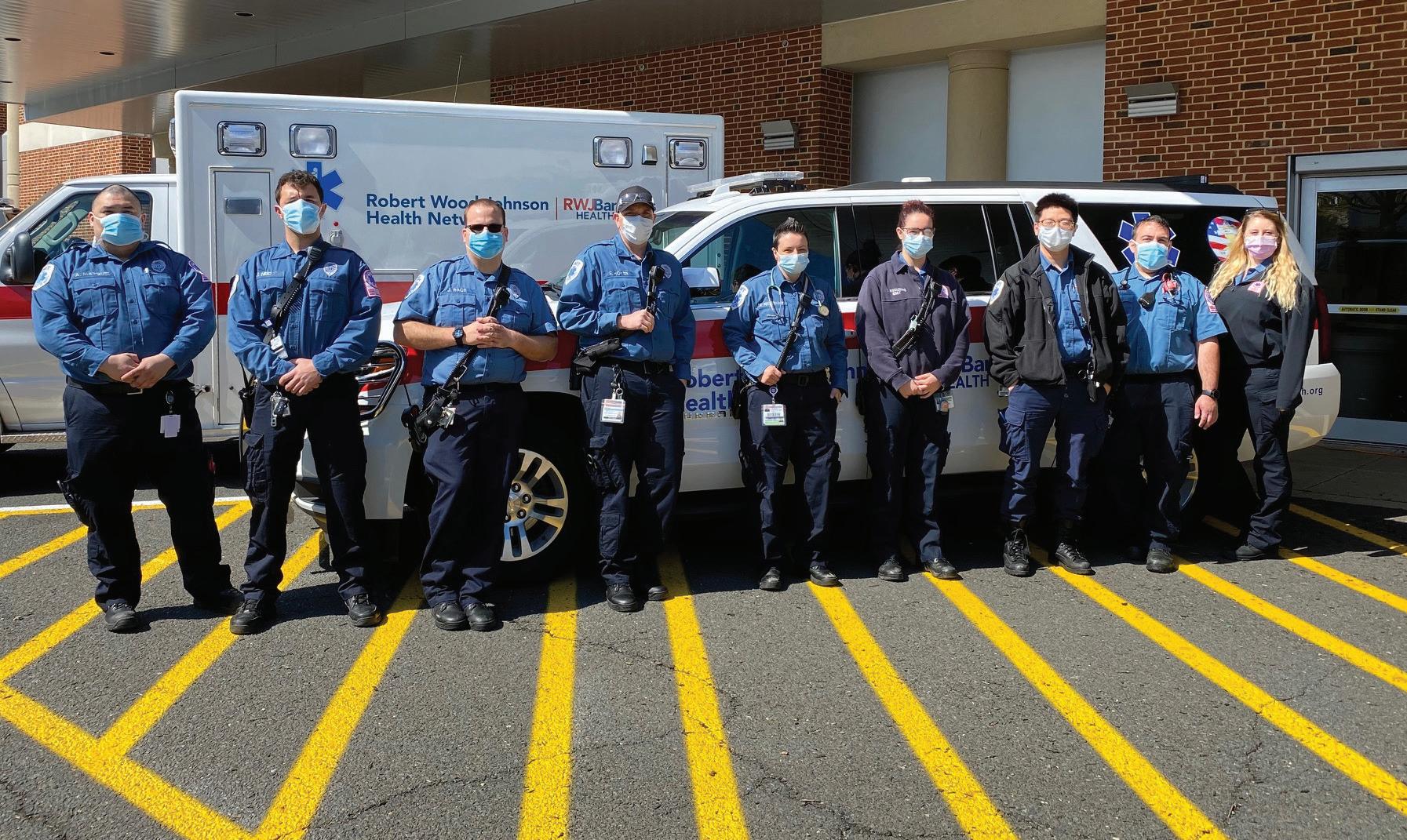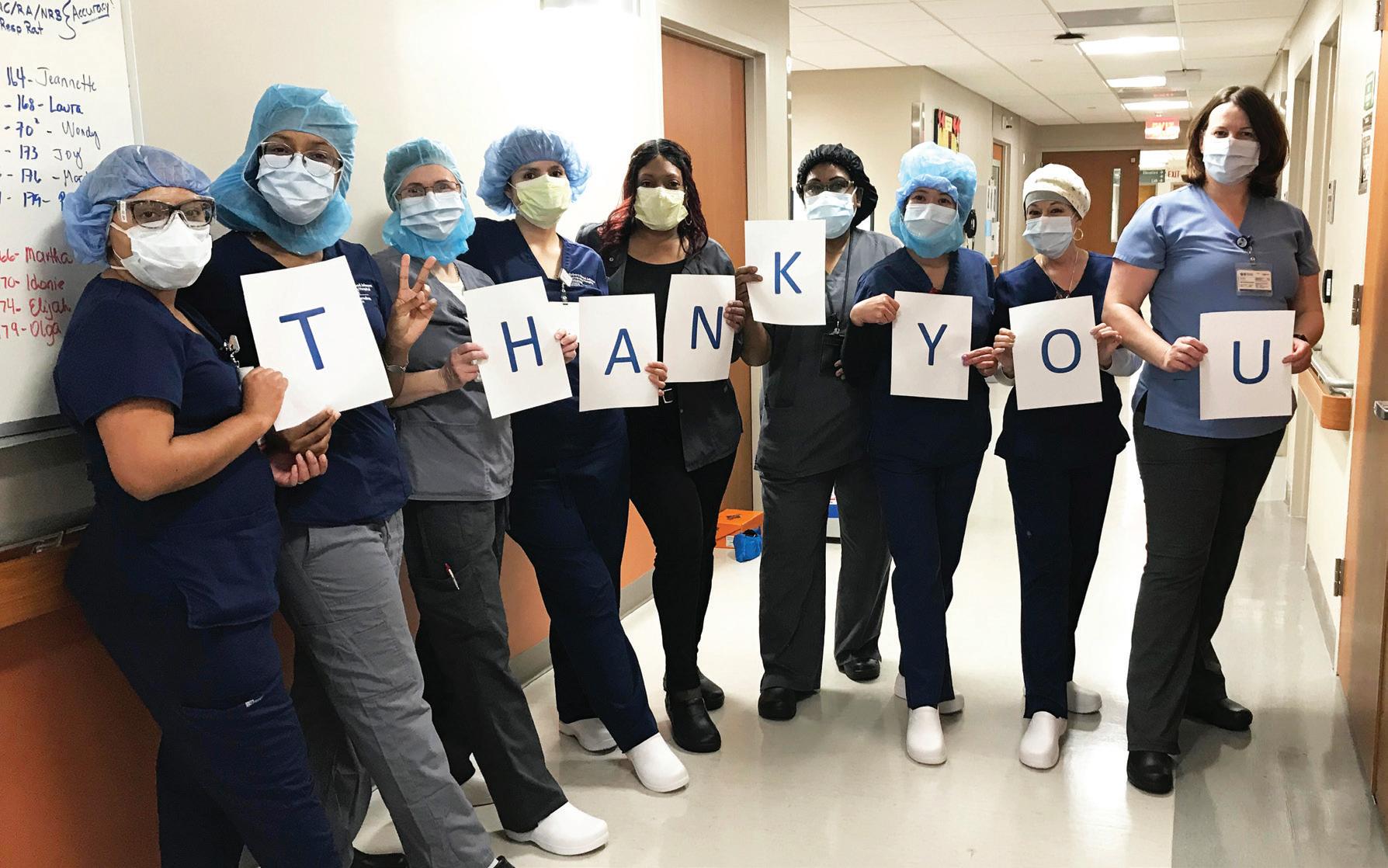
5 minute read
INSIDE THE FRONT LINES. Five health
INSIDE THE FRONT LINES






FIVE HEALTHCARE PROVIDERS SHARE WHAT THEIR ROLES MEAN TO THEM AND TO THE PATIENTS THEY CARE FOR AT ROBERT WOOD JOHNSON UNIVERSITY HOSPITAL SOMERSET.
MICHAEL RODRICKS, MD
MEDICAL DIRECTOR, INTENSIVE CARE UNIT As the medical director of the intensive care unit (ICU), I care for critically ill patients.
Our facility has 16 ICU beds, and at any given moment we have four or five ventilators in Our facility has 16 ICU beds, and at any given moment we have four or five ventilators in use. During the pandemic, we saw a massive influx of patients suffering from COVID-19 who were critically ill and required mechanical ventilation (life support). We doubled the size of our ICU and called in all possible resources to help care for the critically ill in our community. in our community.
For a patient to benefit from a ventilator, a wholescale team approach is needed—these aren’t magical devices that work on autopilot. A critical care nurse with extensive training aren’t magical devices that work on autopilot. A critical care nurse with extensive training serves as the linchpin in the care of patients. The amount of labor to care for a ventilated serves as the linchpin in the care of patients. The amount of labor to care for a ventilated patient is significant, so a nurse ideally cares for no more than two patients at a time. patient is significant, so a nurse ideally cares for no more than two patients at a time.
In addition to bedside nurses and physicians of several specialties, other providers who are integral to the care team include respiratory therapists and clinical pharmacists (to help guide constantly evolving treatment plans). As an intensivist, I serve as the captain of the ship, ensuring that everything is being done according to the best evidencebased guidelines. The specter of exposure and falling ill is omnipresent for all frontline providers.




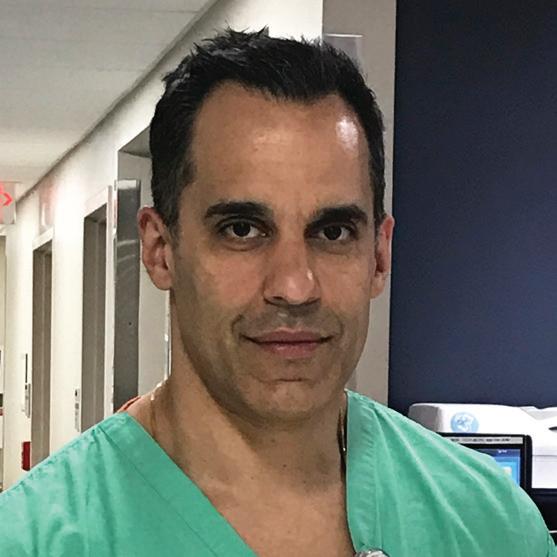
KATIE DUNCIL, RN, BSN
I’m a night-shift nurse working from 7 p.m. to 7 a.m. on one of our dedicated COVID-19 units. During the pandemic, we saw people of all ages—as young as their 30s—with COVID-19. This disease can affect anybody of any age. It’s a scary illness because some patients who come in seem to be OK, but then their illness can quickly progress.
It’s heartbreaking to know that patients have to go through this alone, isolated in their rooms. Physical contact with family is so important when you’re ill, but visitors are currently restricted to prevent the spread of COVID-19. Phone calls and FaceTime are their only connection to their friends and family right now. As I reflect on this experience, it has made my passion for nursing even stronger. I love being a nurse. There’s nothing else that I would want to do.

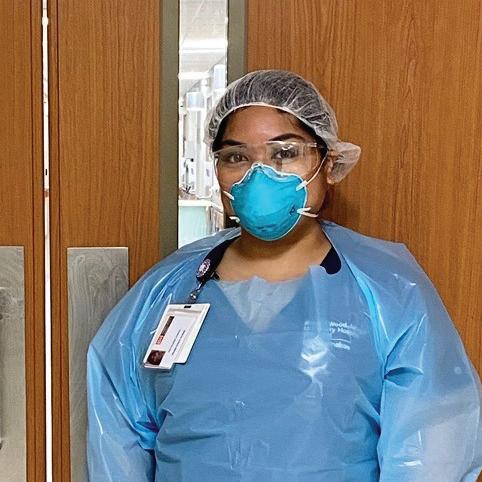

JOHN BUCEK, MD, FAAFP
We developed dedicated teams to care for patients on our COVID-19 units. I led the first team, made up of a family medicine physician, an infectious disease specialist, a pulmonologist, a pharmacist and an advanced practice nurse. It’s been remarkable how everyone has come together, and very beneficial to have the same group of people taking care of the same patients and sharing ideas.
Aft er three weeks of caring for patients with COVID-19, I began to experience symptoms. It started with a nosebleed and then I lost my sense of smell followed by the telltale fever. Fortunately, my symptoms were mild so I was able to recover at home. Aft er I fully recovered, I was back at the hospital caring for our COVID-19 patients. Now that I have the antibodies for COVID-19, I plan to donate my plasma to help others battling this virus.


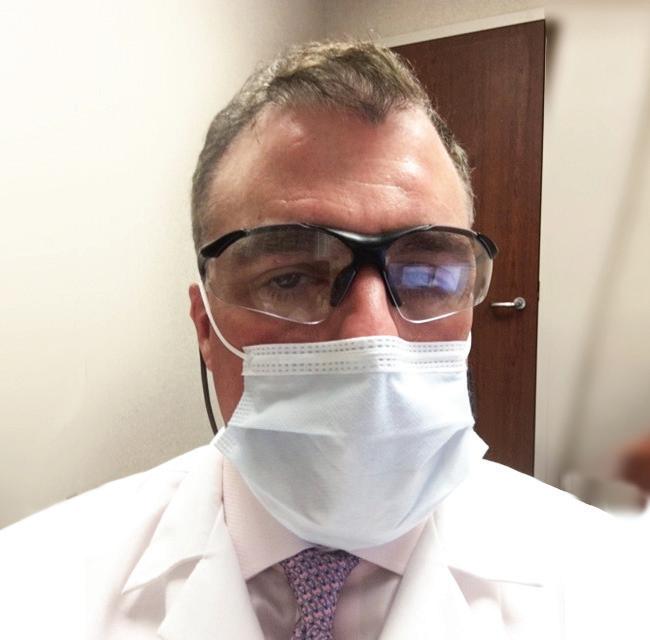
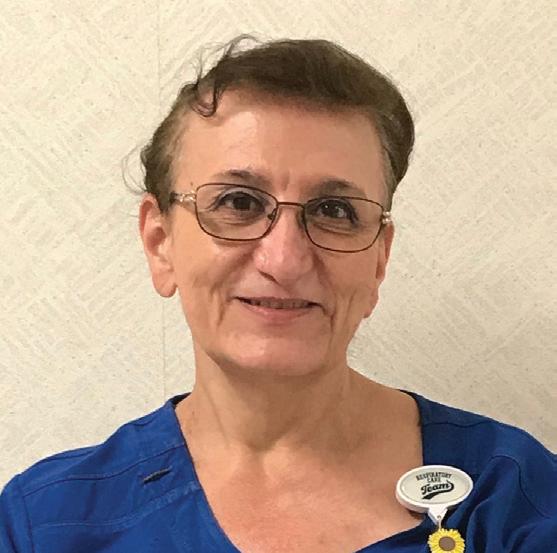

MARIA KALOGIROS, RT
I’ve been a respiratory therapist for 45 years, and have worked at Robert Wood Johnson University Hospital Somerset for the past 20 years. Many COVID-19 patients who are hospitalized develop coughing, congestion and shortness of breath as their bodies try to fight this invader. When lung congestion worsens, patients often need supplemental oxygen and respiratory care. If their breathing worsens and pneumonia develops, some patients need to have an endotracheal tube placed in the airway so their breathing can be supported by a ventilator. We monitor patients’ exhaled carbon dioxide and blood oxygen levels continuously, and we adjust their ventilator settings frequently in response to disease progression. The goal is to support their breathing enough to allow their bodies to fight and heal.
SHARON PARRILLO, BSN, RN, CIC, CPPS
DIRECTOR, INFECTION PREVENTION I spend time educating staff about how diseases are transmitted and what precautions to take to prevent the spread of infection. I’m able to help people navigate through scary situations so they can remain calm and focused on their work.
The COVID-19 pandemic has been the most challenging time in my 18 years as a nurse.
COVID-19 is much more widespread than other infectious diseases we’ve dealt with, including measles and tuberculosis, and so many people are at risk. We’ve seen increasing numbers of patients of all ages coming to us with symptoms. Fortunately, many are able to go home. However, others are severely ill and require intensive care.
The safety of our staff is a major focus, and we’re working hard to ensure that they have the personal protective equipment needed, including masks, gowns and goggles. I feel a tremendous weight of responsibility to ensure that everybody is safe, especially while they navigate unfamiliar processes.





